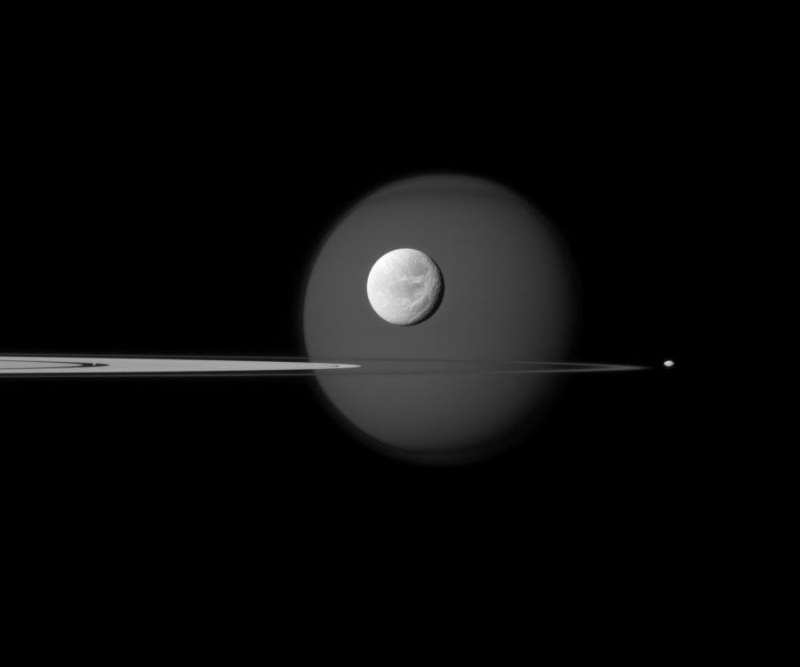Explanation: A fourth moon is visible on the above image if you look hard enough. First -- and furthest in the background -- is Titan, the largest moon of Saturn and one of the larger moons in the Solar System. The dark feature across the top of this perpetually cloudy world is the north polar hood. The next most obvious moon is bright Dione, visible in the foreground, complete with craters and long ice cliffs. Jutting in from the left are several of Saturn's expansive rings, including Saturn's A ring featuring the dark Encke Gap. On the far right, just outside the rings, is Pandora, a moon only 80-kilometers across that helps shepherd Saturn's F ring. The fourth moon? If you look closely in the Encke Gap you'll find a spec that is actually Pan. Although one of Saturn's smallest moons at 35-kilometers across, Pan is massive enough to help keep the Encke gap relatively free of ring particles.
1999 2000 2001 2002 2003 2004 2005 2006 2007 2008 2009 2010 2011 2012 2013 2014 2015 2016 2017 2018 2019 2020 2021 2022 2023 2024 2025 |
Yanvar' Fevral' Mart Aprel' Mai Iyun' Iyul' Avgust Sentyabr' Oktyabr' Noyabr' Dekabr' |
NASA Web Site Statements, Warnings, and Disclaimers
NASA Official: Jay Norris. Specific rights apply.
A service of: LHEA at NASA / GSFC
& Michigan Tech. U.
|
Publikacii s klyuchevymi slovami:
Saturn - Saturn rings - Saturn's Moon - Titan - Dione - Saturn - sputniki Saturna - kol'ca Saturna - Titan - Diona
Publikacii so slovami: Saturn - Saturn rings - Saturn's Moon - Titan - Dione - Saturn - sputniki Saturna - kol'ca Saturna - Titan - Diona | |
Sm. takzhe:
Vse publikacii na tu zhe temu >> | |
